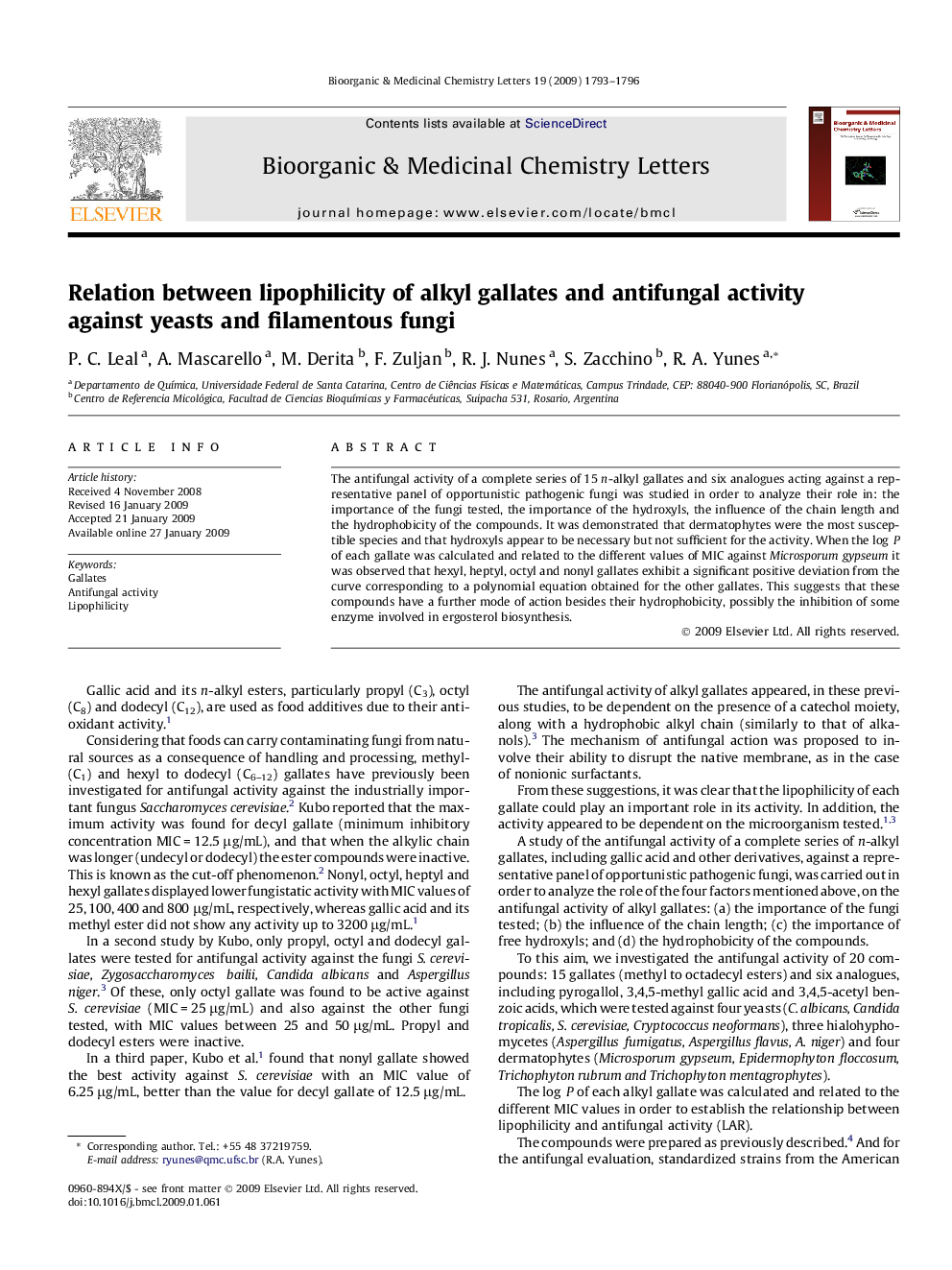| Article ID | Journal | Published Year | Pages | File Type |
|---|---|---|---|---|
| 1374206 | Bioorganic & Medicinal Chemistry Letters | 2009 | 4 Pages |
The antifungal activity of a complete series of 15 n-alkyl gallates and six analogues acting against a representative panel of opportunistic pathogenic fungi was studied in order to analyze their role in: the importance of the fungi tested, the importance of the hydroxyls, the influence of the chain length and the hydrophobicity of the compounds. It was demonstrated that dermatophytes were the most susceptible species and that hydroxyls appear to be necessary but not sufficient for the activity. When the log P of each gallate was calculated and related to the different values of MIC against Microsporum gypseum it was observed that hexyl, heptyl, octyl and nonyl gallates exhibit a significant positive deviation from the curve corresponding to a polynomial equation obtained for the other gallates. This suggests that these compounds have a further mode of action besides their hydrophobicity, possibly the inhibition of some enzyme involved in ergosterol biosynthesis.
Graphical abstractWhen the log P of each gallate was calculated and related to the different values of MIC against Microsporum gypseum it was observed that hexyl, heptyl, octyl and nonyl gallates exhibit a significant positive deviation from the curve corresponding to a polynomial equation obtained for the other gallates. This suggests that these compounds have a further mode of action besides their hydrophobicity, possibly the inhibition of some enzyme involved in ergosterol biosynthesis.Figure optionsDownload full-size imageDownload as PowerPoint slide
